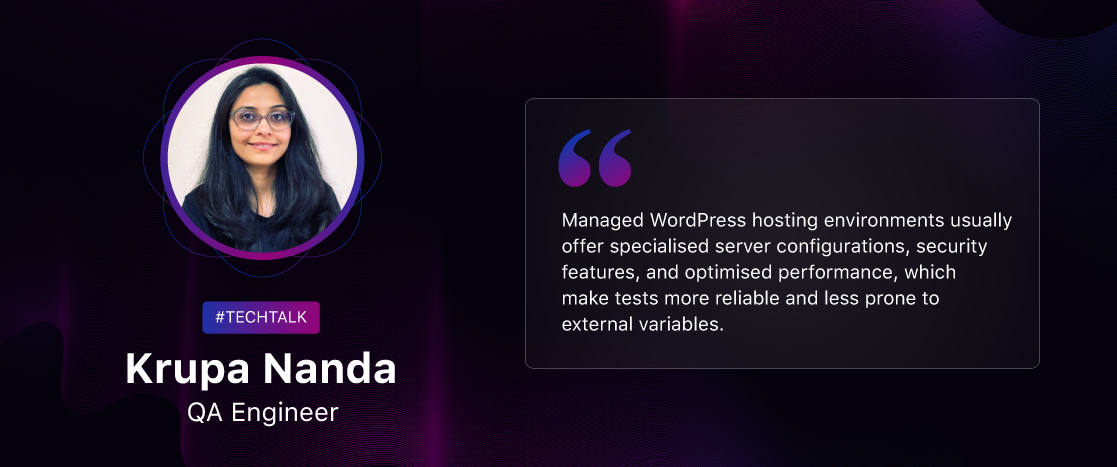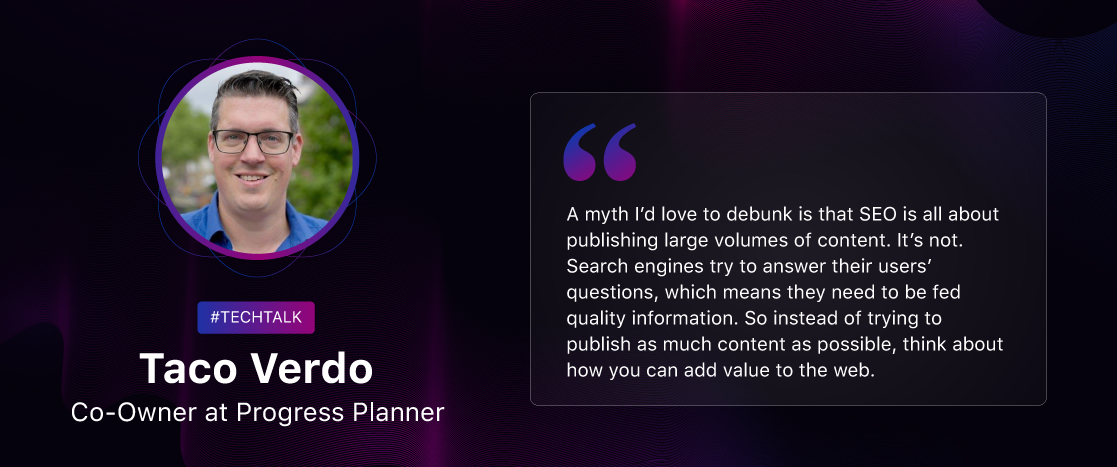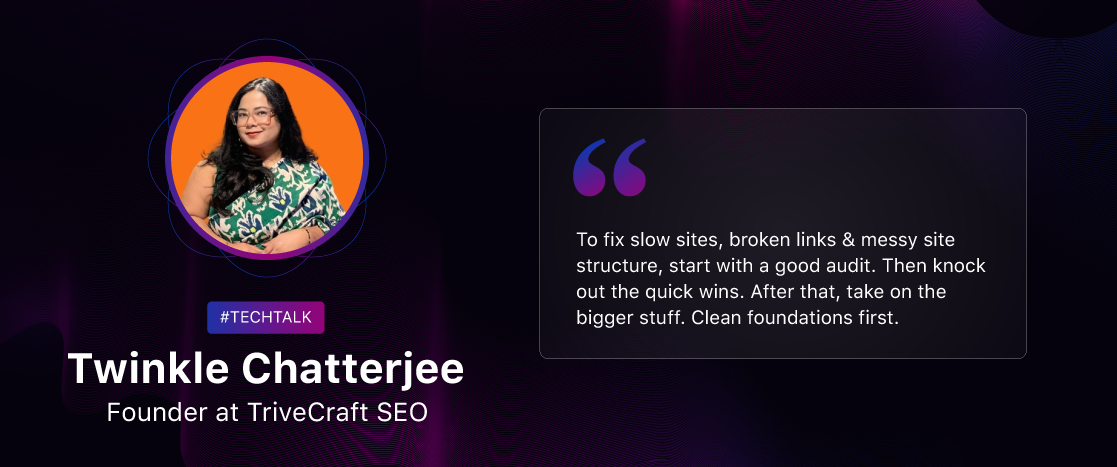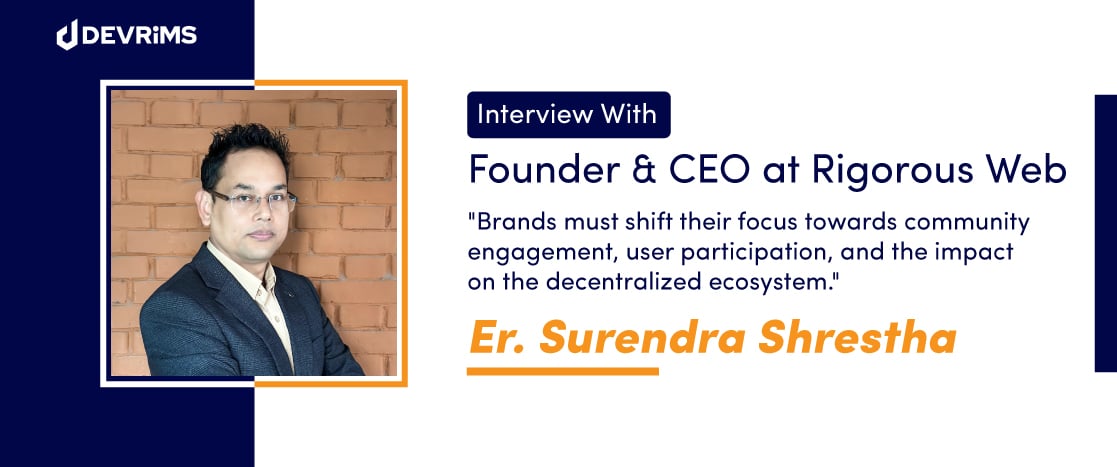
Devrims #TechTalk 035: Er. Surendra Shrestha Talks Candidly About WordPress and SEO
Devrims: Hey Surendra, thanks for your time and support. Tell us a bit about your background and how you first got started with WordPress.
Surendra: Sure, I’d be happy to share some insights into my background and my journey with WordPress. I hold a degree in computer engineering and started my web development journey shortly after graduation. I initially began working on core PHP programming for nearly two years. As I continued to expand my skills and expertise, I delved into content management systems like Drupal and Joomla, which were gaining prominence at the time.
During this phase, I seized the opportunity to undertake an internship focused on WordPress. It was during this internship that I immersed myself in the world of WordPress, I got into theme and plugin development. I distinctly recall selecting WordPress as my platform of choice due to its exceptional flexibility in handling themes and plugins, ease of use, and easy-to-learn user interface which I found highly appealing.
Devrims: How do you start Rigorous Web? What motivated you to launch your digital agency? How has Rigorous Web evolved and grown over the past 9 years since you founded it in 2014?
Surendra: Starting Rigorous Web was the culmination of my almost four years of experience as a programmer. The idea to launch a web agency began to take shape when I, along with another freelancer and a management expert, decided to come together and establish the company. The pivotal moment that sparked this initiative was my interactions with local and global IT Entrepreneurs, which provided valuable insights into effective team management and project workflows. These interactions, in turn, fueled my entrepreneurial aspirations and gave me the confidence to pursue this endeavor.
However, my greatest motivation came from the unwavering support I received from my professional network, IT communities, and the exceptional collaborative spirit within our team. Our journey had its share of challenges and successes. Initially, Rigorous Web Services was formed by three partners, but eventually, circumstances led to their departure from the business. This meant that I had to rebuild the agency from the ground up.
One of the cornerstones of our business operations has been our commitment to a 100% refund policy and our dedication to on-time project delivery with the best quality codes. These principles have brought with them significant responsibilities and challenges, all of which we tackled with determination.
Over the years, the extraordinary dedication of our team has been the driving force behind our evolution and continuous improvement. We began as a modest three-person team but eventually grew to thirty members. When the COVID-19 pandemic hit, and some team members left, we transitioned to remote work during the pandemic.
Currently, we have a dedicated team of twenty individuals, and as a cohesive IT unit, we continue to grow and thrive. Our journey at Rigorous Web has been marked by resilience, adaptability, and a steadfast commitment to excellence.
Devrims: Can you tell us about some of the WordPress themes you’ve designed and developed? What was your design process like?
Surendra: Certainly, we’ve crafted 500+ diverse WordPress themes and plugins, from classic to modern, in multiple Theme Stores. Notable themes include “Real Home” for real estate, “Buzz Magazine” for online magazines, and “Blog Aarambha” for bloggers. Plus, “Block Aarambha,” a Gutenberg Full Site Editing theme, and more, all tailored to specific niches and user preferences.
Our design process begins with a thorough analysis of the target audience and their needs. We believe in creating themes that not only look visually appealing but also provide a seamless user experience. We take into consideration factors like niche, industry trends, and user expectations.
Once we have a clear understanding of the project requirements, we move on to the design phase. This involves creating wireframes and prototypes to visualize the layout and user interface. We pay close attention to responsive design to ensure our themes work smoothly on various devices and screen sizes.
After finalizing the design, we proceed to the development phase. Our team of developers employs clean and efficient coding practices, adhering to WordPress coding standards. We focus on creating themes that are lightweight, fast-loading, and easy to customize.
Throughout the development process, we also prioritize SEO best practices to ensure that the themes are search engine friendly. Security is another paramount concern, and we implement robust security measures to protect our themes and the websites they’re used on.
Quality assurance and testing are integral parts of our process. We rigorously test the themes for compatibility, performance, and functionality to deliver a bug-free product.
Our themes cover a range of niches, from business and e-commerce to blogs and portfolios. We continuously update and improve our themes to stay in line with WordPress updates and evolving web trends.
In summary, our design and development process at Aarambha Themes revolves around user-centricity, performance, security, and adherence to industry standards, resulting in high-quality WordPress themes that meet the needs of a diverse user base.
Devrims: When doing customizations and modifications for clients’ websites, how do you determine what changes are needed to meet their goals?
Surendra: When it comes to customizing and modifying clients’ websites to align with their goals, we follow a structured approach.
Understanding Goals:
We begin by conducting in-depth consultations with our clients to fully understand their objectives and expectations. This is where we gain clarity on their specific needs, whether it’s enhancing the user experience, improving functionality, or achieving a particular design aesthetic.
Website Analysis:
Next, we assess the website comprehensively, considering user feedback, analytics, and best practices to pinpoint areas for improvement.
Detailed Project Plan:
With a clear understanding, we create a detailed project plan outlining scope, timelines, and resources, ensuring alignment with the client’s expectations and budget.
Implementation with Communication:
During the implementation phase, our experienced team of developers and designers work diligently to make the necessary modifications. Throughout this phase, we maintain open lines of communication with the client. We provide regular updates and seek their input to ensure the changes meet their goals effectively.
Quality Assurance and Fine-Tuning:
Quality assurance and testing are crucial for seamless functionality. We welcome client reviews and feedback for fine-tuning.
Collaboration and Excellence:
Ultimately, Our approach emphasizes close collaboration and understanding of client objectives, delivering customized solutions that exceed their goals and offer an exceptional user experience.
Maintenance and support:
We address any additional revisions and provide maintenance to keep the website secure and up-to-date. Client training is offered for independent updates and modifications if desired.
Devrims: What are some important SEO considerations you keep in mind specifically for WordPress sites? How do you optimize content, URLs, metadata, etc?
Surendra: Okay, So Optimizing WordPress sites for SEO involves several crucial considerations to enhance visibility and search engine ranking. I think the most important consideration would be quality content. I along with my team make sure that we publish high-quality, valuable, and unique content. Use proper Headings (H1, H2) to structure the content and include relevant keywords.
Next would be ensuring mobile responsiveness since Google prioritizes mobile-friendly websites in its ranking. Similarly, Internal linking is another important factor since it helps users navigate and improve the SEO structure of the site. Other would be regular monitoring, optimizing images, backlinks, and so on.
Regarding your second question, content can be optimized by ensuring that associated keywords are present, adding meta and title tags, and including relevant links. For URLs, optimization involves using hyphens to separate words, including content-related keywords, using lowercase letters, and limiting folders in the URL structure.
Metadata is fundamental for SEO. The meta title should be at least 30 and up to 70 characters long, while the meta description should have a minimum of 110 characters, with the recommended character count being 150. Google will then select the portion that best matches the query. These details may seem minor, but they have a significant impact on SEO.
Devrims: How do you approach social marketing strategy for WordPress sites? Which platforms and tactics have you found most effective?
Surendra: Creating an effective social marketing strategy for WordPress sites involves several key elements. Understanding your audience and selecting suitable platforms are critical components of this strategy. To get started, you need to identify your target audience and define your goals clearly.
In my experience, Google Ads has proven to be an effective platform for paid advertising. To enhance organic reach and engagement, it’s essential to create shareable content and integrate social media features on your site. Employing relevant hashtags and collaborating with others can significantly expand the reach of your content.
In today’s dynamic social media landscape, short videos have gained popularity on platforms like TikTok and Instagram Reels, offering an engaging way to connect with your audience. Additionally, platforms such as Instagram, Pinterest, and YouTube remain essential for sharing visual content, including images, infographics, and longer videos. Encouraging user-generated content can lead to authentic endorsements, further boosting your brand’s credibility.
It’s crucial to recognize that social media marketing is an ongoing endeavor. Staying updated, experimenting with new approaches, and adapting to emerging trends and plugins that align with your site’s objectives are essential for long-term success.
Devrims: What challenges have you faced in WordPress development? How did you overcome them? Can you walk us through your typical process for building and launching a new WordPress site?
Surendra: In the world of WordPress development, a couple of recurring challenges have often surfaced. First and foremost, optimizing the performance of a WordPress site, especially when dealing with a multitude of plugins and media-rich content, has been a persistent concern. The need for fast loading times is not only crucial for an enhanced user experience but also plays a significant role in search engine optimization (SEO). Another challenge encountered revolves around compatibility issues. Integrating various themes, plugins, and third-party tools can sometimes lead to conflicts that impact the overall functionality and design of the site.
To address these challenges effectively, several strategies have proven valuable over the years. Performance optimization was tackled through the utilization of caching plugins, meticulous image optimization, and a discerning choice of lightweight plugins. Maintaining the smooth operation of a WordPress site required keeping themes and plugins up to date and rigorously testing any updates within a staging environment before implementing them on the live site. Furthermore, selecting themes and plugins with solid coding standards and a strong reputation became a key practice in minimizing conflicts and ensuring the seamless functionality of WordPress sites. These measures collectively contribute to a more streamlined and successful WordPress development process.
Typical Process for Building and Launching:
- Client Consultation
- Planning
- Theme and Plugin Selection
- Design and Development
- SEO Optimization
- Testing
- Security Measures
- Content Migration
- Client Review
- Training
- Final Review
- Site Launch
- Post-Launch Optimization and Ongoing Maintenance
This refined process helps build and launch WordPress sites that meet client goals and deliver a great user experience.
Devrims: Let’s do some quick rapid-fire questions:
| Devrims | Surendra |
| Day or Night | Night |
| Tea or Coffee | Of course, Coffee |
| Mac or Windows | Mac |
Devrims: What’s your perspective on the current WordPress ecosystem? Where do you see it headed in the future?
Surendra:Well, that is quite an interesting question for a WordPress lover. Isn’t it?
In my professional perspective, the WordPress ecosystem is characterized by its vibrancy and ongoing evolution. Renowned as one of the leading content management systems, it has consistently maintained a prominent position within the industry. The expansive marketplace for themes and plugins contributes to its appeal by offering a wide spectrum of solutions that cater to the diverse needs of website owners.
What further enriches the WordPress experience is the active and dedicated WordPress Community that comprises contributors, developers, and users. This collaborative environment is instrumental in driving continuous improvements and refinements to the platform.
Furthermore, the present state of the WordPress ecosystem is marked by dynamic evolution, fueled by innovative developments like Full Site Editing, the Gutenberg editor, Patterns, Blocks, and Templates. These transformative elements are reshaping the landscape of website creation and management, emphasizing a more intuitive and modular approach to content creation. This ongoing evolution solidifies WordPress’s position as a pioneering force in the world of web development.
Talking about the future, I anticipate exciting developments. The integration of AI and Automation in WordPress tools and plugins holds tremendous potential to streamline tasks like security monitoring, SEO optimization, and content recommendations. This promises to not only save time but also enhance the performance and efficiency of websites.
Another trend I’m eagerly watching is the rise of Headless WordPress. This approach is gaining popularity, and I believe it has the potential to empower developers to create even more dynamic and interactive web applications. By decoupling the front end and back end, Headless WordPress offers a new level of flexibility and opens up possibilities for innovative digital experiences.
In summary, the WordPress ecosystem’s present and future are marked by dynamism and innovation, ensuring that it remains at the forefront of web development and continues to evolve in response to emerging trends and technologies.
Devrims: For fledgling WordPress developers just getting started, what advice or resources would you recommend?
Surendra: To kickstart your journey, get a solid grip on WordPress basics, including its core components and structure. Dive into the WordPress Developer Handbook, an invaluable resource, offering comprehensive documentation and best practices for your development voyage. Master version control, especially when collaborating, with platforms like GitHub providing robust code management tools.
Tap into the WordPress community, known for its inclusivity and support. Participate in forums, attend meetups, and explore WordCamps. Engage with the community through social media and blogs to learn, connect, and grow.
Practice is key. Apply your skills by working on real projects, whether personal websites, open-source contributions, or client work.
For essential resources, check out WordPress.org, WordPress Developer Handbook, W3Schools, Codecademy, Udemy, WPBeginner, and GitHub.
Your growth as a WordPress developer is a continuous journey, and community engagement is your catalyst for advancement.
Devrims: How do you evaluate different managed WordPress hosting providers based on factors like performance, security, scalability, etc?
Surendra: Selecting the managed WordPress hosting provider that best aligns with your requirements requires a thorough evaluation based on crucial criteria, including scalability, security, and performance. Here’s how to assess them effectively:
- Performance
- Uptime: Check the provider’s uptime guarantee. Try to find 99.9% or more. Avoid providers with frequent downtime.
- Page Load Speed: Both SEO and user experience benefit greatly from faster loading times. To guarantee quick page loading, assess the infrastructure and technologies offered by the provider.
- Caching: For better performance, a reliable host should include built-in caching systems or make it simple to integrate caching plugins.
- Server Location: To cut down on latency, choose a host whose server locations are close to your intended audience’s location.
- Security
- SSL Certificate: To ensure secure data transport, make sure the host provides free or simple SSL certificate incorporation.
- Firewalls: To shield your website from attacks, a reliable server should have a robust firewall.
- Regular Backups: Seek alternatives for automated daily or instantaneous backups.
- Scalability
- Traffic Growth: Ensure the host can handle traffic spikes and provide easy scalability options.
- Server Resources: As your website grows, the host should provide you with the ability to enhance the CPU, RAM, and storage.
- CDN Integration: For quicker content distribution around the globe, a reliable host should make it simple to integrate with content delivery networks (CDNs).
Other than this, Round-the-clock support is crucial for addressing issues promptly, User-friendly dashboard, Compatibility, Pricing, Reviews, and Reputation are some of the factors to evaluate hosting providers. To guarantee that your WordPress site stays dependable and secure, your decision should be in line with your unique requirements and growth goals.
Devrims: What advice would you give site owners considering a switch to managed WordPress hosting?
Surendra: Switching to managed hosting can be a beneficial move for many website owners. Some of my advice would be:
- Assess your needs: Before switching, evaluate your website’s current as well as future needs. Consider factors like traffic volume, content, and performance requirements.
- Properly Research Hosting Providers: Take your time to research different managed WordPress hosting providers. The features, performance, security, and customer support, should be compared. Choose providers that specialize in WordPress hosting with a good track record.
- Backup Your Data: Make sure to back up all your website data, including databases and files before migrating. Having your copy ensures data security during the switch.
- Consider Scalability: Scalability options should be provided by the managed hosts, so your website can grow without any disruption. Check if they provide easy scaling of resources.
- Understand the Pricing: Managed hosting tends to be more expensive than shared hosting. Evaluate the pricing structures carefully and ensure there are no hidden fees.
- Evaluate Security Measures: A secure host is vital to protect your website and user data so, assess their security features including firewalls, DDoS protection, malware scanning, and SSL certificates.
I can go on and on about this. The point is it’s essential to make an informed decision, select the right provider, and plan the migration carefully.
Devrims: We’d love to see a picture of your workstation.
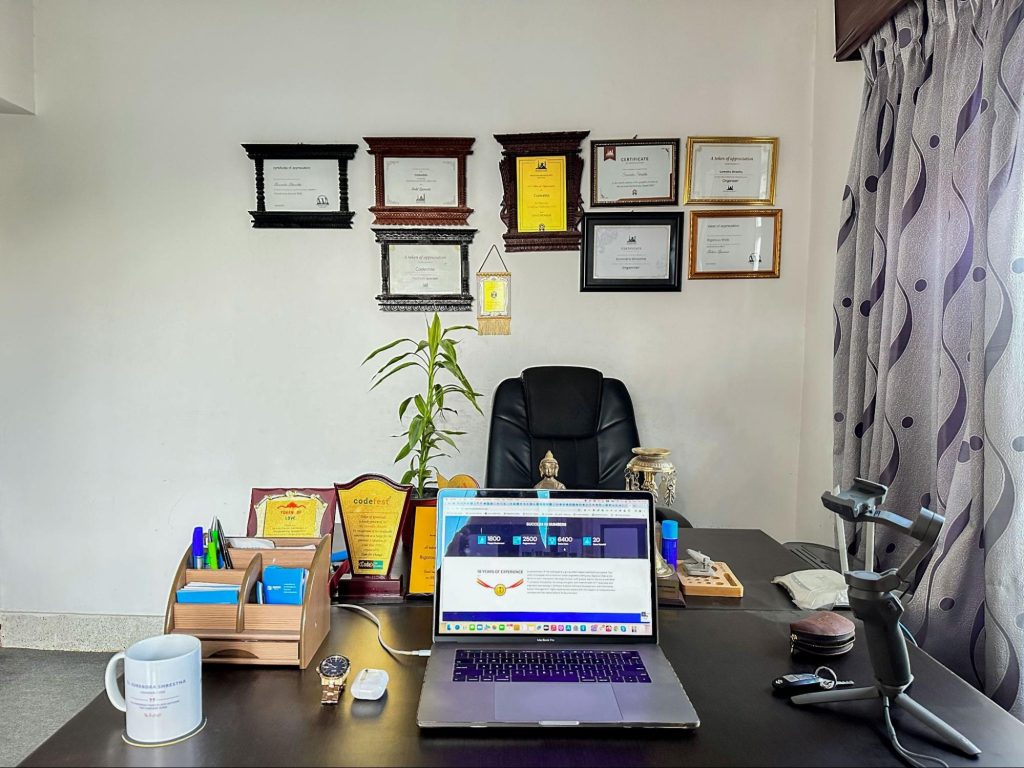
Devrims: Who else you would recommend us to interview next and why?
Surendra: At the moment, I don’t have any specific recommendations for interviews. However, you might consider reaching out to professionals in the web development, digital marketing, or SEO fields.

